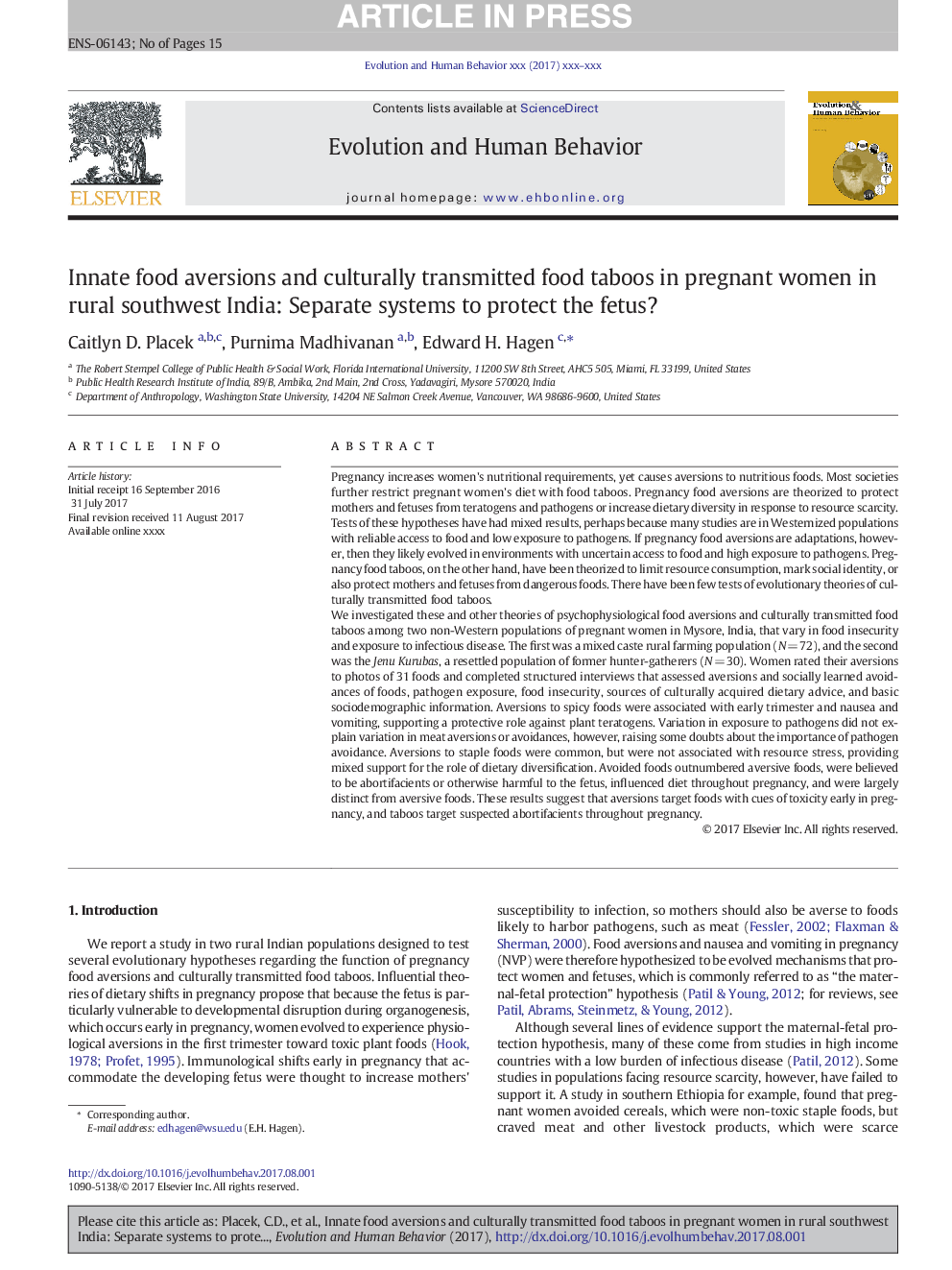ترجمه فارسی عنوان مقاله
تندرستی های مواد غذایی و مواد غذایی منتقله از طریق غذا در زنان باردار در جنوب غربی هند: سیستم های جداگانه ای برای محافظت از جنین؟
عنوان انگلیسی
Innate food aversions and culturally transmitted food taboos in pregnant women in rural southwest India: Separate systems to protect the fetus?
| کد مقاله | سال انتشار | تعداد صفحات مقاله انگلیسی |
|---|---|---|
| 124816 | 2017 | 15 صفحه PDF |
منبع

Publisher : Elsevier - Science Direct (الزویر - ساینس دایرکت)
Journal : Evolution and Human Behavior, Volume 38, Issue 6, November 2017, Pages 714-728

